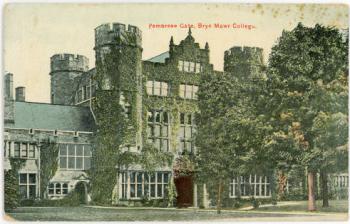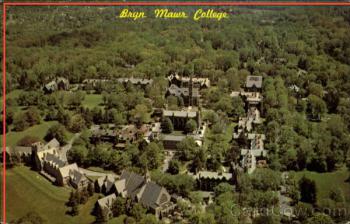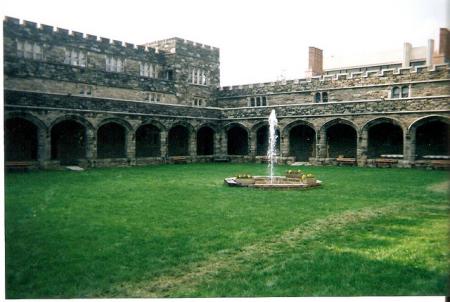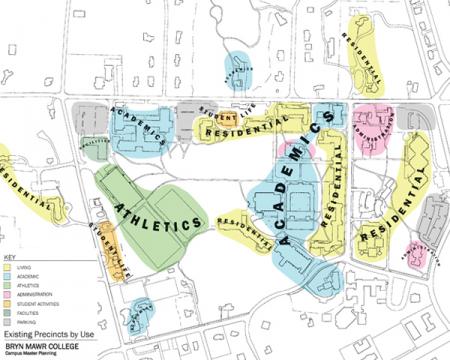Serendip is an independent site partnering with faculty at multiple colleges and universities around the world. Happy exploring!

Issues of Representation and Misrepresentation
Representation for others seems to be an inescapable thing, both in language and in life. We are represented by others politically, academically and in media. When Beyoncé sings “Run the World (Girls)”, she sings “Work my 9 to 5/ better cut my check/ this goes out to all the women getting it in” in attempt to speak to working women; however she herself does not work a typical 9 to 5 job. Representation pervades our lives in a way that seems unavoidable. We as students are constantly being spoken for- many of the articles we have been reading about education speak for us and attempt to dissect and interpret the desires of students; our desires. Even if the point of the article is to say that students should not have to be constantly redefined into a representation; there is still a certain degree to which we are not only being spoken for but assumed as a unified category. “Students” itself feels simplified; there is so much diversity that is made invisible by this generalization. This seems to be one of the main problematic side effects of representation, in addition with misrepresentation and misinterpretation. Even as I write this, I am aware of the implications of using “we” and “our” to refer to people on a general level, and that I myself am attempting to speak for others. My reference to Beyoncé is beginning to feel like a transgression in the sense that I assume a particular interpretation of her words and that I assume she does not work a 9 to 5 job.
We proceed, we stop
 The visualization I chose for Bryn Mawr was the Pembroke Hall (http://triptych.brynmawr.edu/cdm/compoundobject/collection/BMC_postcard/id/367/rec/18). In my essay, I described my experience running through the Arch on the Parade Night. Freshwomen run into the campus, through Pembroke Arch. Four years later, we will on the Senior Step and welcome newcomers. Though it was physically a short distance to travel through, I think it is a condensed epitome of a Bryn Mawr experience as an undergraduate. Before I came to Bryn Mawr this summer, all my visual impression of the college was built up by the digital pictures that I had access to. Pembroke is definitely a widely used visualization of our college. I loved the architecture and the view on the first sight because it looked like an entrance to a community filled with vigor and wisdom to me. Also, my residential life experience in Pem is another reason I chose it. Each dorm has its own culture, but there are characteristics shared by all, such as the self-governance.
The visualization I chose for Bryn Mawr was the Pembroke Hall (http://triptych.brynmawr.edu/cdm/compoundobject/collection/BMC_postcard/id/367/rec/18). In my essay, I described my experience running through the Arch on the Parade Night. Freshwomen run into the campus, through Pembroke Arch. Four years later, we will on the Senior Step and welcome newcomers. Though it was physically a short distance to travel through, I think it is a condensed epitome of a Bryn Mawr experience as an undergraduate. Before I came to Bryn Mawr this summer, all my visual impression of the college was built up by the digital pictures that I had access to. Pembroke is definitely a widely used visualization of our college. I loved the architecture and the view on the first sight because it looked like an entrance to a community filled with vigor and wisdom to me. Also, my residential life experience in Pem is another reason I chose it. Each dorm has its own culture, but there are characteristics shared by all, such as the self-governance.
Commitment Problems and Possible Ghosts

This is an aerial photo of the Bryn Mawr campus from many years ago, though the actual date is unkonwn. My assumption was that this was essentially the campus in its entirety at that time, though it is quite possible that the editor or photographer cropped out areas where Erdman and everything north of the gym stand today. While googleing images of bryn mawr, I came across an aerial photo and knew that was the right path to be following. After a few more google attempts I came across this one, which was of the right vintage quality that I wanted. When picking something that I need to write about or be with for an extended period of time, I often become extremely indecisive about what exactly I want. That is precisely why I picked a shot of almost the enitre physical campus, so I could be as inclusive or exclusionary as I wished when writing. This was perhap as bad idea--sometimes when there are too many options I find myself having none at all. This was not the easiest paper I have ever written for precisely that reason.

Venture, Miracle, See
|
Venture, n. & v. etymonline.com: mid-15c., "to risk the loss" (of something), shortened form of aventure, itself a form of adventure. General sense of "to dare, to presume" is recorded from 1550s. Noun sense of "risky undertaking" first recorded 1560s; meaning "enterprise of a business nature" is recorded from 1580s. Venture capital is attested from 1943.
Wiktionary.org: Etymology - shortening of adventure. Noun: A risky or daring undertaking or journey. Verb:
5. To confide in; to rely on; to trust.
OED: 1. a. Fortune, luck; chance. 1. c. at a venture, at random, by chance, without due consideration or thought 6. The (or an) act of venturing upon something; an attempt at some action; also, the means or result of so venturing. |
|
miracle (n.) |

Dance and Silence
On Friday evening, I was lucky enough to be able to attend the Volshky Ukrainian Dance Ensemble’s performance at Goodhart Auditorium here at Bryn Mawr. I was impressed by their performance first and foremost because of their talent, but secondly because it reminded me very much of the work on silence we’ve done so far in this class. I haven’t been formally trained in dance – except some basics of ballroom – but I do understand the way dance is used as an outlet for expression. I find this particularly interesting because dance is such a visceral way of expressing oneself, but at the same time, it’s silent. At one point in the Volshky performance, a male and female dancer embraced on the stage – after dancing away from and around each other for much of the dance. A number of people in the audience (myself included) responded to the embrace with a resounding, “Aww!” The way a movement can evoke an emotional response in people showed me the way we can communicate silently.

The *Magical* World of Bryn Mawr College
I chose this photograph of the Thomas cloisters because this is the first "true" image of Bryn Mawr College I saw. By "true" I mean an image that was not included in a college brochure or a letter to my parents trying to convince them to enroll me at BMC. My roommate Paige Toft, when she found out that I have no idea what the BMC campus really looks like, told me to to look up "bryn mawr cloisters" on Google Images, and this is the image that first caught my eye. Instant thought: the Transfiguration Courtyard in Harry Potter! I felt immediately closer to my chosen college, simply because I knew I had found at least one place where I would feel at home at BMC. Of course, now that I'm here, there are numerous places all around campus where I feel that way, but back in July, when I didn't know what to expect of the College, this photo gave me hope and reassurance. It showed me that the college I picked at least looks like my dream school - Hogwarts. That is why the cloisters in Thomas are the site I've chosen to revisit throughout the year; although I'm allergic and therefore can't comfortably sit on the grass, this is a place where I feel happy and satisfied.

Crossing the Border
This is a visualization of how groups of buildings at Bryn Mawr relate to the general flow of activities. It is from the website of the company that updated Bryn Mawr's layout. This image caught my eye because it spoke to the part of my brain that likes to categorize things in order to understand them. I like how the colors define the places of purposeful activity, but that the white spaces, or Terra Incognita, serve as places where we are free to wander. I have chosen as my spot the place near the labrynth where we met for class on Tuesday. It is a nice place just over the border between the defined, colored parts of this map and the blank Terra Incognita. It is secluded, but I do not feel cut off from the world. It has wonderful natural aspects to gaze at, but it is not strictly wilderness.


Blackout poetry!
In the interest of fostering our love for poetry, (This one's for you, Anne!) I wanted to share some of the blackout poetry that I've done. Dan mentioned this in class but I thought I'd give an example. Trying to reduce fact into art is an infuriatingly lovely process, and I recommend everybody try it out!
I realize that they are both on their side and hard to read so I'll type them out here:
They were dismantled,
reduced.
Critical and
Emotional.
I close around me
rather than just watching the moment bloom
amidst
the world.
--
Perhaps,
the idea
was part of the air.
An elegant lightness,
derived from the burdens upon them.
Predictably,
she asked it
to dance.

Policing Education
In Greg Dimitriadis' "Popular Culture, Pedagogy, and Urban Youth: Beyond Silenced Volices" I was intrigued his a sentence stating: "Accountability has become the watchword for policing what education can mean for youth in state-funded institutions" (233). I couldn't help but think about "Prisoners of a Hard Life" (a reading we did for our class on vision) and how the theme of over-policing: who has the power to police, and who and/or what are they policing, was prominant in many of the stories.
In our first education class, we read a quote that said that the purpose of education was continually changing. I couldn't help but find this problematic, because I didn't understand why the PURPOSE of education needed to change/ be changed. I found myself contemplating both the reasons why the purpose of education would change as well as who had the power to make that call. Why is there a need to police education? I couldn't come up with an answer. All I could come up with was this notion that how we learn is dependent on individual ethnography, for ethnography is critical to understanding silenced voices (234), but I couldn't understand why individual ethnography could, at a policy level, alter what education means to the individual. In other words, why would my race, gender, or my urban upbringing affect what the purpose of education should be for me? Shouldn't the purpose of education be the same for everyone and the manner by which we arrive at that purpose or goal be different?



